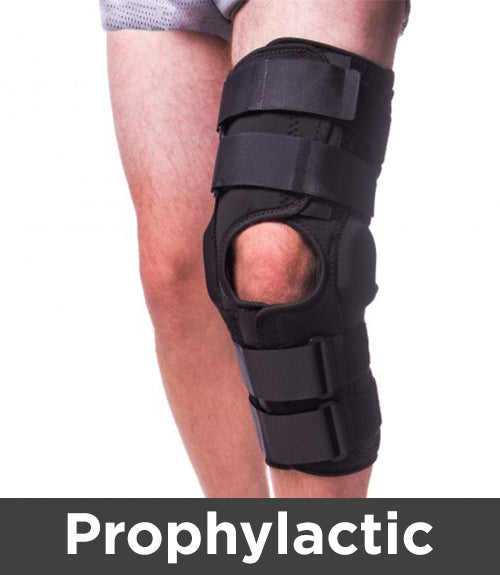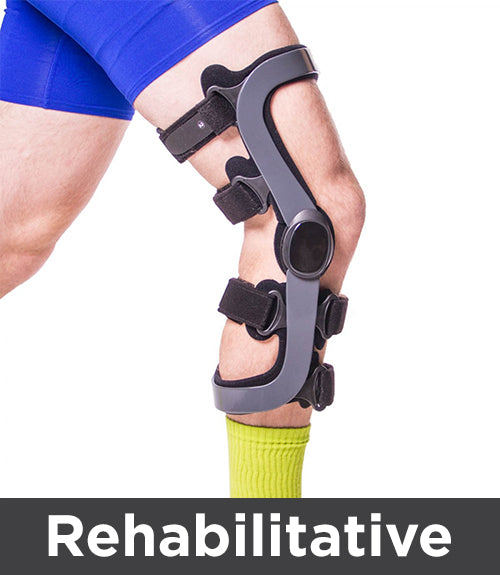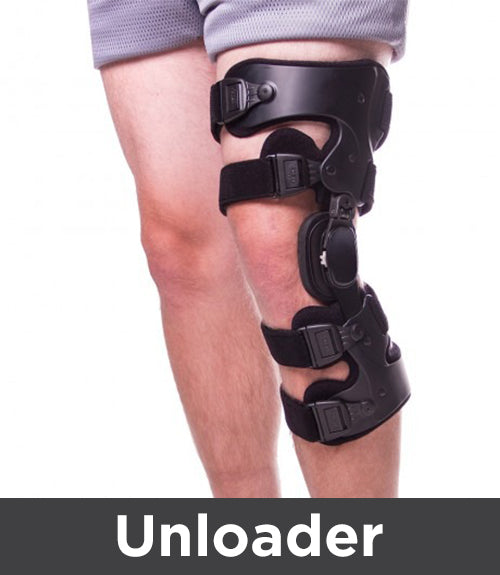The Four Types of Knee Braces
It bends, straightens and rotates slightly. Sometimes it creaks, and when the situation is bad, it gives way. Such are the workings of the knee joint. The knee is formed by the articulation of the femur (thigh bone) and tibia (bone of the lower leg) and is encased in the joint capsule. It contains an assortment of ligaments and tendons, which provide the structural framework for the joint. Since the knee absorbs 80% of our body weight while standing, it is at a high risk for injury, especially in individuals who participate in sports and other vigorous activities.
There are many causes of knee injuries, including bursitis, tendonitis, ligament tears, worn-out cartilage, arthritis, muscle sprains, muscle strains and a host of other problems. Postural misalignment such as knock-knees or bow-legs may also predispose a person to future knee injuries. Many people, from athletes to people with arthritis and other knee problems, turn to knee braces for support or pain relief.
Knee braces support the knee joints to prevent further injury, while also reducing pain and swelling. Knee supports are great for surgery recovery and rehabilitation of the knee joints as well. Knee braces fall into four general categories, these including Prophylactic, Functional, Rehabilitative, and Unloader/Offloader knee braces. Learn about the difference between each category, and in what circumstances you would need a brace falling under that category.
-
Prophylactic (pro-fa-lack-tick) Knee Braces
Prophylactic knee braces are designed to prevent and reduce the severity of ligamentous injuries to the knee. It is most commonly designed and used by athletes who play contact sports such as football. Prophylactic knee braces protect the MCL (medial collateral ligament) against valgus knee stresses, while also protecting the knee joints from being injured again. These knee braces are great for athletes of contact sports at high risk for MCL injury, or who previously suffered an MCL injury. Two of our top prophylactic knee bracing options include this ACL sports brace and range of motion knee stabilizer.
-
Functional Knee Braces
A functional knee brace is used to provide support to knees that are already injured, either from playing a sport or a fall. Functional knee braces are also great for reducing rotation following an ACL injury or tear, and for those who need additional support after ACL repair surgery. In some cases, they can also be used to support mild to moderate PCL or MCL instability.
Shop our collection of functional knee braces.
-
Rehabilitative Knee Braces
Rehabilitative knee braces help in limiting potentially harmful knee movements while a person is rehabilitating after a recent knee surgery or an injury. (View our post-op knee braces.)
These types of braces work to protect a reconstructed or repaired ligament and allow early motion of the knee joint. Rehabilitative knee braces are also a great tool to protect the knee joints and ligaments to prevent future or recurring injury.
-
Unloader/Offloader Knee Braces
Unloader/Offloader knee braces are designed to provide relief to people who have arthritis in their knees, specifically individuals who suffer from medial compartment knee osteoarthritis. These knee braces are designed to unload stress from the affected joint by placing pressure on the thigh bone. This forces the knee to bend away from the painful area. These braces, such as our OA knee brace, can also be helpful for people who are waiting to have knee replacement surgery and want to take stress off their knees beforehand.














